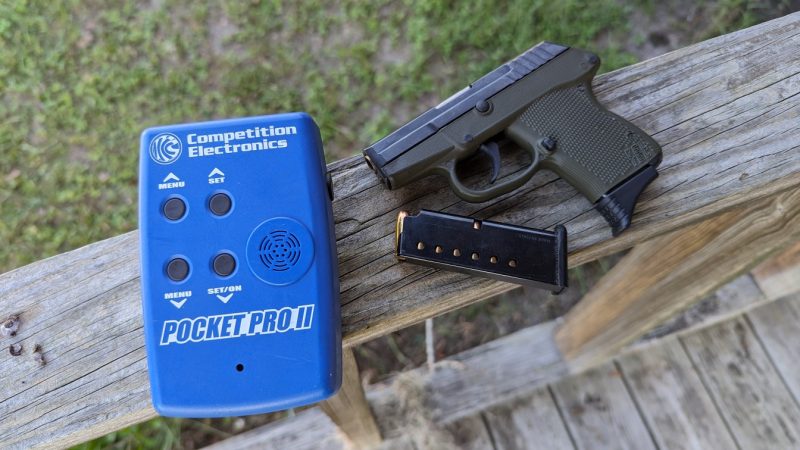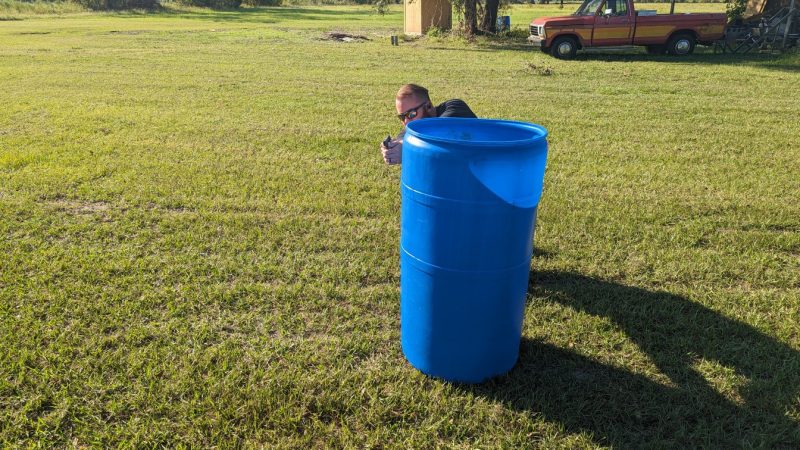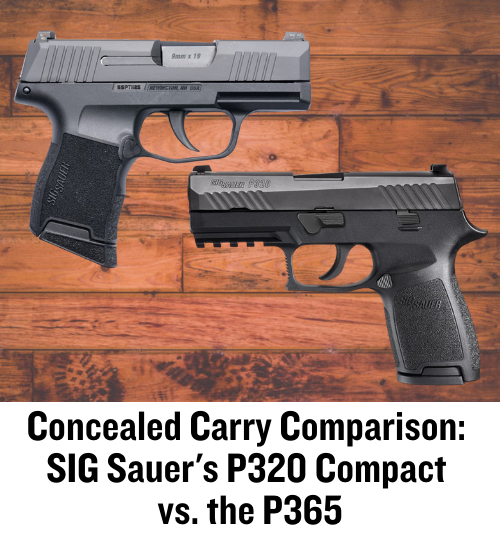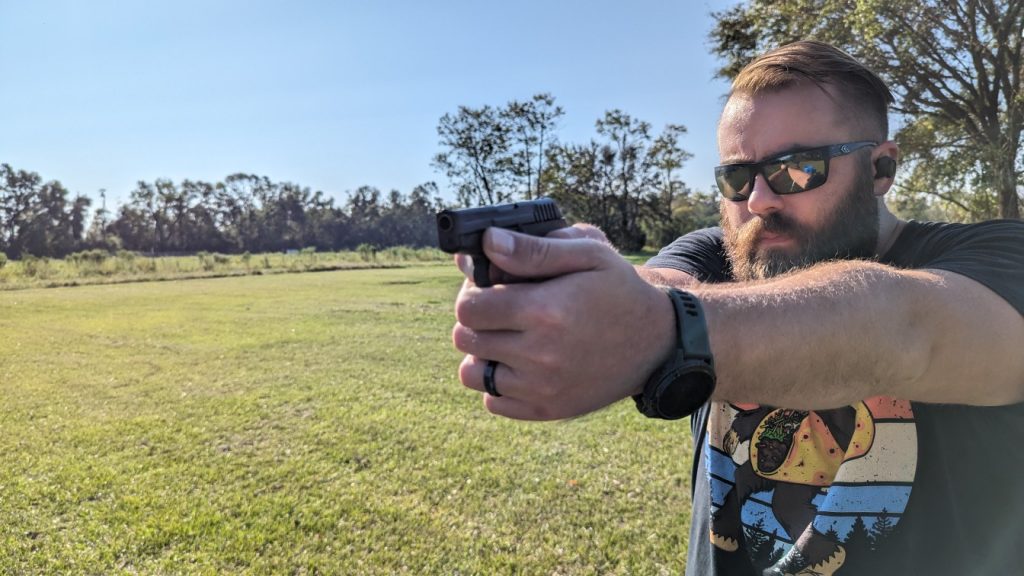When you go to the range, it’s good to have a plan. What are you going from? What skills do you plan to improve? That’s the golden question, and knowing what you are going to do at the range allows it to be an efficient use of your time. With that in mind, practicing with any of the widely available police quals gives you a guided form of training while at the range. It’s the easy button. With that in mind, let’s look at the Vermont Off-Duty gun qualification.
Why a Cop Qual For a Concealed Carrier?
Police have a much different job than any concealed carrier. A lot of their quals can still be great training but are designed to be shot from a duty belt and OWB setup. Most backup guns or off-duty quals are designed to be shot from concealment. This makes them perfectly aligned with the goals of your average concealed carrier. The Vermont Off-Duty gun qual is particularly interesting.
It uses the term point of carry. Point of carry means your holster in whichever way you carry. You can carry it in a belly band, in your pocket, on the waistband, ankle, or whatever. This makes it easy to match your own concealed carry requirements.
What We Need For the Vermont Off-Duty Qual
The Off Duty qual won’t kill your ammo budget. In fact, you can run it twice with a single box of 50 rounds of ammunition. The qual only requires 25 rounds. Your carry gun needs to be able to hold at least five rounds. In fact, you’ll load your automatic or revolver with five rounds for each phase. You’ll need two magazines or a speed loader or speed strip.

Nothing too complicated. You will need a cover object. It can be a purpose-built device, a barrel, or anything you can use to train for cover usage. We’ll obviously need a holster, so don’t slack on that. We don’t need a shot timer, but it can be handy to track progress and give you the start signal. Don’t forget your PPE. The Vermont Off Duty qual can be fired with any target. I used some printed Sage Dynamics targets.
Shooting the Vermont Off-Duty Gun Qual
Stage One – 3 Yards – Standing – Two Rounds Fired
On the command to fire (or beep from a shot timer), draw your weapon and fire two rounds while stepping either to the left or to the right. Return the weapon to your holster when finished.
Stage Two – 3 Yards – Standing – Three Rounds Fired
On the command to fire, draw and fire three rounds while stepping left to right. Now your gun is empty, so conduct a reload before returning the gun to your holster. (Reload your empty magazine with five rounds.)

Stage Three – 5 Yards – Standing – Three Rounds Fired
On the command to fire, the shooter will draw and fire three rounds while using their dominant hand only. Transition to the low-ready stance.

Stage Four – 5 Yards – Standing – Two Rounds Fired
On the command to fire, the shooter will pass the weapon from their dominant hand to their nondominant hand and fire two rounds. After firing two rounds, reload the weapon.

Stage Five – 7 Yards – Standing or Kneeling – Two Rounds Fired
For stage five, we are using our cover. You can stand if the cover is tall enough to allow it or kneel if the cover is shorter than standing height. On the beep, draw and fire two rounds on the target. After shooting, keep the weapon oriented at the target.
Stage Six – 7 Yards – Standing or Kneeling – Three Rounds Fired
On the command to fire, the shooter will fire three rounds and then reload behind cover. After completing the reload, return the gun to its holster.

Stage Seven – 10 Yards – Standing or Kneeling – Five Rounds Fired
Shooters can choose between the standing or kneeling position in this part of the off-duty qual. At the command to fire, the shooter will draw and fire five rounds in their chosen position. Reload the weapon and then return it to your holster.
Stage Eight – 15 Yards – Standing or Kneeling – Five Rounds Fired
Shooters can choose between the standing or kneeling position. At the command to fire, the shooter will draw and fire five rounds in their chosen position. Return it to your holster.

That’s it. We are done.
After Thoughts
There is no real pass or fail here. There is no time limit or score required to win. However, the Vermont off-duty qual is still a good bit of training. I required all of my shots to hit the Sage Dynamics targets, and I aimed to shoot and move as fast as possible. With a shot timer, I recorded each time, and now I have a baseline to improve upon. It’s not too tough to complete and does provide a good beginner’s baseline for skills training.
The Off Duty qual can be a great way to spend some range time and can even be fired dry at home. With that in mind, I do suggest going dry first to make sure you understand the course of fire. After that, go hot and live it up.
ABOUT THE AUTHOR:

Travis Pike is a former Marine Machine gunner who served with 2nd Bn 2nd Marines for 5 years. He deployed in 2009 to Afghanistan and again in 2011 with the 22nd MEU(SOC) during a record-setting 11 months at sea. Travis has trained with the Romanian Army, the Spanish Marines, the Emirate Marines, and the Afghan National Army.
He serves as an NRA-certified pistol instructor and pursues a variety of firearms-based hobbies.
![]()
You may also enjoy these popular articles:




©MTC Holsters, LLC and CrossBreed Holsters Blog, 2023.
Unauthorized use and/or duplication of this material without express and written permission from this site’s author and/or owner is strictly prohibited. Excerpts and links may be used, provided that full and clear credit is given to Travis Pike and the CrossBreed Blog with appropriate and specific direction to the original content.
![]()

